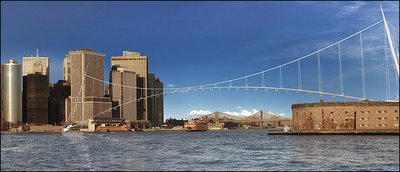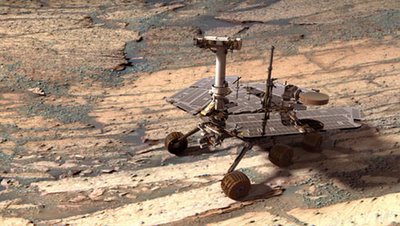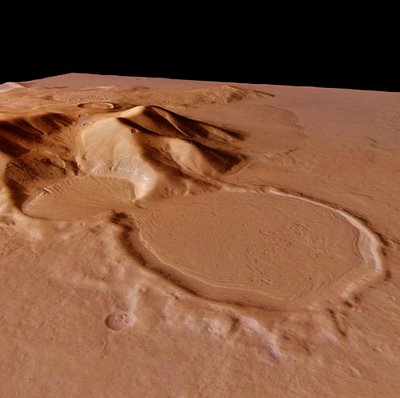
Well, BLDGBLOG has taken to the road, now typing to you from California. 10 days in LA, Death Valley, Owens Lake, San Francisco… back March 8th, assuming my plane doesn’t crash. Till then, in lieu of regular posting, I’ve put together a table of contents for new readers, old readers, bored readers, impatient readers – so click around, see what interests you, leave comments, forward to others, have fun. And if you have tips for what to do out here, of course, leave a comment below… Thanks!

Dismantling Gothic cathedrals arch by arch, on the beaches of an equatorial island!
The world’s largest diamond mine!
Rollerskating alone at night through subterranean knots!
A seed vault to avert planetary apocalypse!
Listening to the arched foundations of London instrument!
A man exactly reproduces his old apartment using colorful nylon sheets!
Weird geometries in the Kansas farmscape!
Slow landscapes of silt and the J.G. Ballard who loves them!
The lost gods of Europe hurl spheres at each other in space!
Valves, drains, and tunnels in the self-connected topology of underground London!
Entire cities snowing diamonds from Baroque domes!
Is that architecture or just a soundtrack hovering in space?
Helicopter photographs in the sububs of self-similarity!
The 7 New Wonders of the World!
Southeast London transformed into a maze of rooftop gardens!
A temporary public park – complete with bench and parking meter!
Lunar electricity!
The poet Shelley sets sail for a volcanic archipelago made entirely of glass!
A London superstadium full of ring magnets will capture the Northern Lights!
Beautiful maps!

The churches of Christopher Wren, transformed into a geomagnetic harddrive!
The World Trade Center was actually a gigantic tuning fork!
Jurassic park, Russian conservation style!
James Bond thwarts a San Franciscan attempt at tectonic warfare!
Slum dwellers and modular parasites of the urban world, unite!
An abandoned island off the coast of Japan!
Unearthly landscapes swarming with alien bacteria!
The suburbs: raw mounds and earthworks, before construction arrives!
Extraterrestrial life rained down on India!
The internal volume of Notre-Dame, Paris, carved into the surface of the moon!
Meat!
The landscape architecture of Hell, its subsurface faults and magmatic geology!
Why not live inside your garage?
Is that a suburb growing out of your spine, or are you happy to see me?
3000km of concrete tunnels installed beneath the deserts of Libya!
The robotic, neverending cinema of Los Angeles traffic control!
A house of landslides, filled with geese!
Hypnotic films of motorway orbitals now available on DVD!
Measuring astronomy – solstice and stars – with a city modeled on Stonehenge!
Unbelievable maps and diagrams of interstellar astral incidence!

Then we hiked alone for a thousand years, and we renamed all the constellations!
The averaged images of suburban ennui!
Food! Cake!
Have you seen this hull before?
New Arctic seaways promise Lovecraftian visions to come!
On the colors of dismantled landscapes, photographed from the air!
Famous architecture, blurred!
Photographs of Chernobyl, including an abandoned alphabet!
Morocco double-exposures!
The Earth in 7.5 billion years!
Fossilized cities!
The art of reforesting continents through tree bombs!
The deserts of the world are musical instruments!
Venice resonates with voices!
Huge and amazing maps of California hydrology!
The city as an avatar of itself!
The wonderfully weird, self-observing urban world of CCTV!
Sci-fi instant cities built above working limeworks pits!
The abandoned malls of Chicagoland!
WWII British sound mirrors used to musicalize mountain storms!

All hell is breaking loose in middle America!
San Jellocisco!
Catching near-earth asteroids using a gigantic baseball mit!
If you’ve got nothing else to do, why not go camping in an abandoned mine?
Inbred, zombified ex-idealists stumble through pressurized undersea utopias, listening to Mozart!
Biking through glass tunnels suspended above metropolitan Toronto!
An inflatable hotel – in deep space!
Folk maps of Brooklyn’s Gowanus Canal!
Cool bridges!
Houses, churches, places to hang: it’s the afterlife of the Quonset hut!
A man jumps from a balloon, free-falls 20 kilometers through the stratosphere, and captures the whole thing on film!
King Kong!
Complicated volcanic pipe networks will extrude cathedrals directly from the earth!
Huge, interconnected white towers in the middle of Beijing!
Arches National Park, Manhattan branch!
Will the International Space Station soon be turned into a sculpture gallery?
An Indonesian mine and the technicolor stalactites it will form in a million years!
In a wilderness of mirrors we lost our own reflections!
Recording the secret music of bridges!
Amazing tree houses by Andrew Maynard!

That should hopefully last you a week… but don’t forget the other posts, below – especially the Mars rover film.
I’ll be back!









































